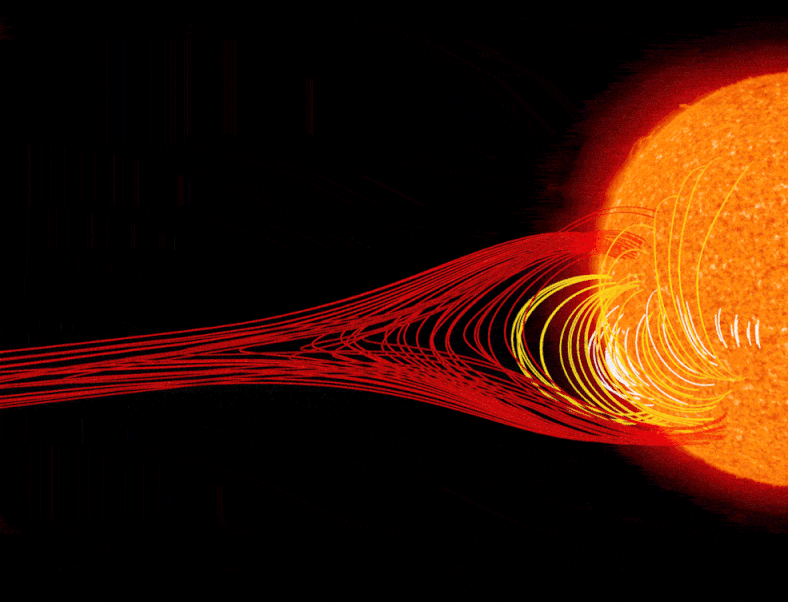Coronal mass ejections, or CME’s for short are the largest type of blast that are shot into space from the sun without any warning. A group of scientists led by the Space Sciences Laboratory at the University of California, Berkley has developed a model that simulates the evolution of these stealth CME’s.
Usually, CME’s will give some kind of warning before they’re about to occur, but the warning may vary. Sometimes you may just see a bright flash whereas other times you might see a burst of heat or even a flurry of solar energetic particles. The average speed of a standard CME is around 1,800 miles per second upon leaving the sun. Stealth CME’s, on the other hand, are quite slow in comparison and only travel at about 250 to 435 miles per second.
The scientists created a model of the sun’s magnetic field using the Solar Terrestrial Relations Observatory (STEREO) and Solar and Heliospheric Observatory (SOHO), and in doing so they discovered that the sun’s rotation is vital to revealing the mystery of these stealth CME’s. When a star like a sun rotates unevenly that difference in rotation stretches the sun’s magnetic fields at varying rates. After around two weeks of this pulling and stretching enough energy is created to produce a stealth CME. As explained by NASA, “When enough tension builds, the coil expands and pinches off into a massive bubble of twisted magnetic fields – and without warning – the stealth CME quietly leaves the sun.”
While a stealth CME could technically disturb the Earth’s magnetic fields it’s unlikely this will happen anytime soon. But at least we know we can predict them now if need be.
More News to Read











